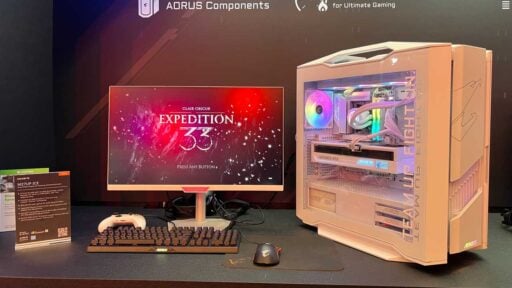What we have here for review is the recently released ASUS ROG Swift OLED PG27AQDM. This is a $999 USD gaming monitor featuring an OLED panel.
Specification wise, what you will get with the PG27AQDM is a 26.5 inch WOLED panel featuring a display resolution of 2560 x 1440. Refresh rate is rated at 240 Hz along with VRR support for both NVIDIA G-Sync (Compatible) and AMD FreeSync Premium.
Disclosure: ASUS sent the ROG Swift OLED PG27AQDM for the purpose of this review. The company did not ask me to say anything particular about it.
- Product Page: ASU ROG Swift OLED PG27AQDM
- Price: $999 USD / ₱61,990 PHP
- Release Date: Q2 2023
Table of Contents:
- 1 Technical Specifications
- 2 Packaging and Accessories
- 3 Design, Build and Connectivity
- 4 OSD and Navigation
- 5 Ergonomics
- 6 Test Setup and Methodology
- 7 OSD Presets
- 8 Gamut
- 9 Tone Response
- 10 Brightness and Contrast
- 11 Screen Uniformity
- 12 Color Accuracy
- 13 Response Time
- 14 Input Lag
- 15 Power Consumption
- 16 Features
- 17 Final Thoughts
Technical Specifications
| Display | |
|---|---|
| Panel Size | 26.5 inches |
| Panel/Backlight | OLED (WOLED) |
| Surface Treatment | Anti-Glare |
| Resolution | 2560 x 1440 (16:9) |
| Pixel Density | 110.84 PPI |
| Refresh Rate | 240 Hz |
| Variable Refresh Rate | AMD FreeSync Premium, NVIDIA G-Sync Compatible |
| Brightness | 450 cd/m² (SDR Peak), 1000 cd/m² (HDR Peak) |
| Contrast Ratio | 1,500,000:1 (Typical) |
| Response Time | 0.03 ms (GtG) |
| Color Saturation | 99% DCI-P3, 135% sRGB |
| Color Depth | 10-bit |
| Connectivity | |
| Display Options | 2x HDMI 2.0, 1x DisplayPort 1.4 |
| USB | 2x USB 3.2 Gen 1 (Type-A) |
| Audio | 1x 3.5 mm (Out) |
| Ergonomics | |
| VESA Mount | 100 x 100 mm |
| Pivot | ±90° |
| Swivel | ±30° |
| Tilt | -5°/+20° |
| Lift | ±52.5 mm/105 mm |
| Anti-strain | Blue Light Filter |
| Dimensions | |
| Length | 605 mm |
| Width | 50 mm |
| Height | 351 mm |
| Weight | 2.8 kg |
Packaging and Accessories
The ASUS ROG Swift OLED PG27AQDM comes in a two part packaging. This is rather slim compared to what I’m used to receive relative to its panel size which is nice. They could do better with the XPS foam though just because I am not a fan of this squeaky stuff.
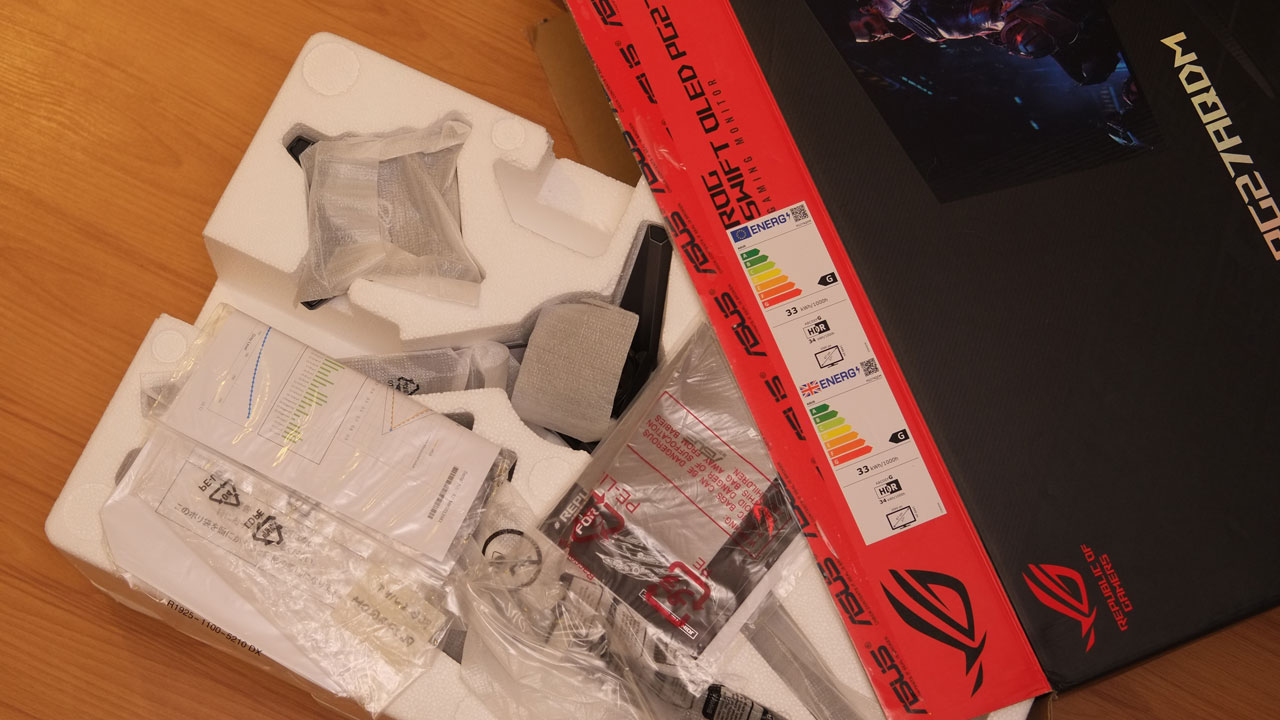
The packaging should contain the following items inside:
- Color pre-calibration report
- DisplayPort cable
- HDMI cable
- Power adapter
- Power cord
- Quick start guide
- ROG pouch
- ROG sticker
- USB 3.2 cable
- VESA mount kit
- Warranty Card
Excellent bundle we got here. I wish ASUS added their Desk Mount Kit which is exactly what they did with the Swift PG259QNR.
Design, Build and Connectivity
The overall design of the PG27AQDM is typical of ROG monitors I’ve tested in recent years. It retained the tripod base, but without the red or orange accents found on some of their releases, making it a much cleaner display or zero eye-sore experience for most gamers. On that note, glare has been also mitigated by its semi gloss/matte coating.
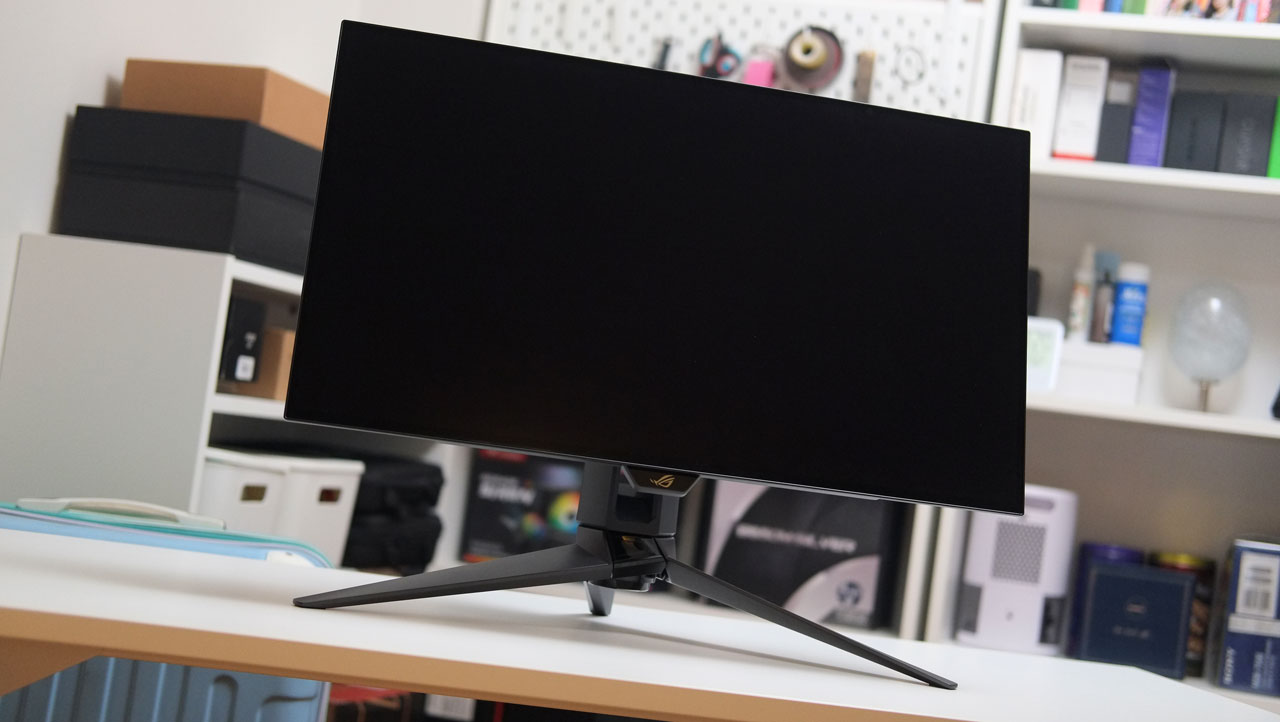
The PG27AQDM is a slim monitor or rather a slim panel monitor with the bulk of its electronics situated at its center. This bulk is also necessary to house its passive cooler that has this faint hum when you put your ear next to it. I tried to pick it up with a measurement microphone but my attempt is futile. Update: This monitor doesn’t have an active cooler. What we heard could be the mains power hum.
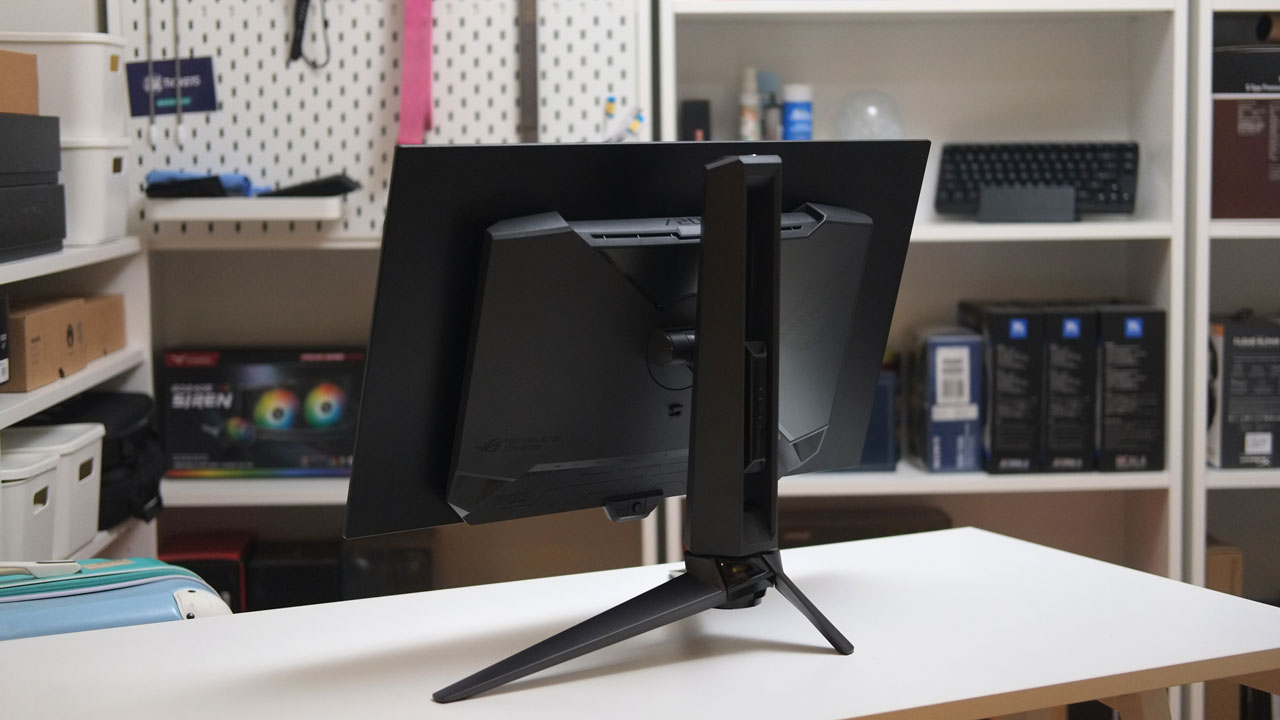
Connectivity options are tucked away at the bottom. We only have one DisplayPort here so no, you cannot daisy chain this with another PG27AQDM if you have the cash to spend.

Nothing much to scrutinize here except for the external power supply – a pet-peeve of mine. In ASUS’ defense, this design helps to lower heat (OLEDs and heat does not mix) and you could actually replace the unit should it die on you.
A joystick and three buttons (including the joystick’s) is all you need to access the OSD menu. It is located at the lower mid part of the panel and acts like a “chin” for extra leverage when setting things up. I find it awesome in the simplest of ways.
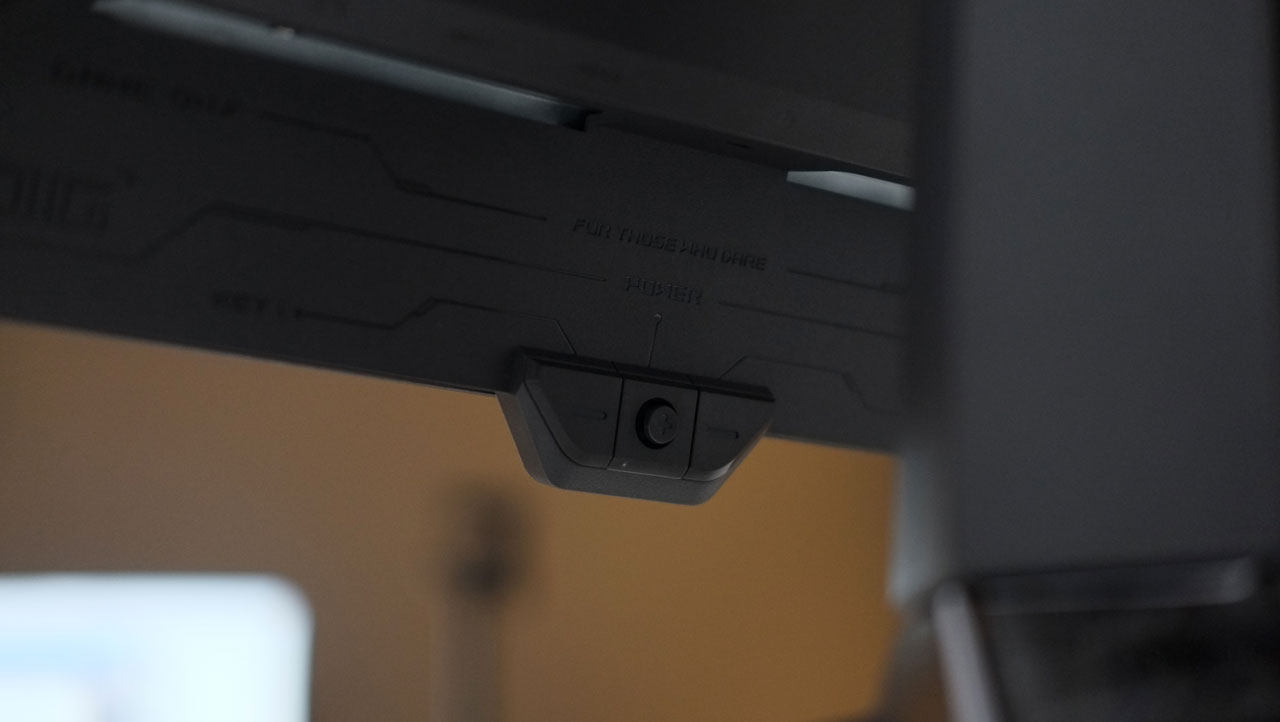
Now the OSD itself comes with tons of menus and sub menus. We have seven in the case of the PG27AQDM and all of them are practically well thought of.
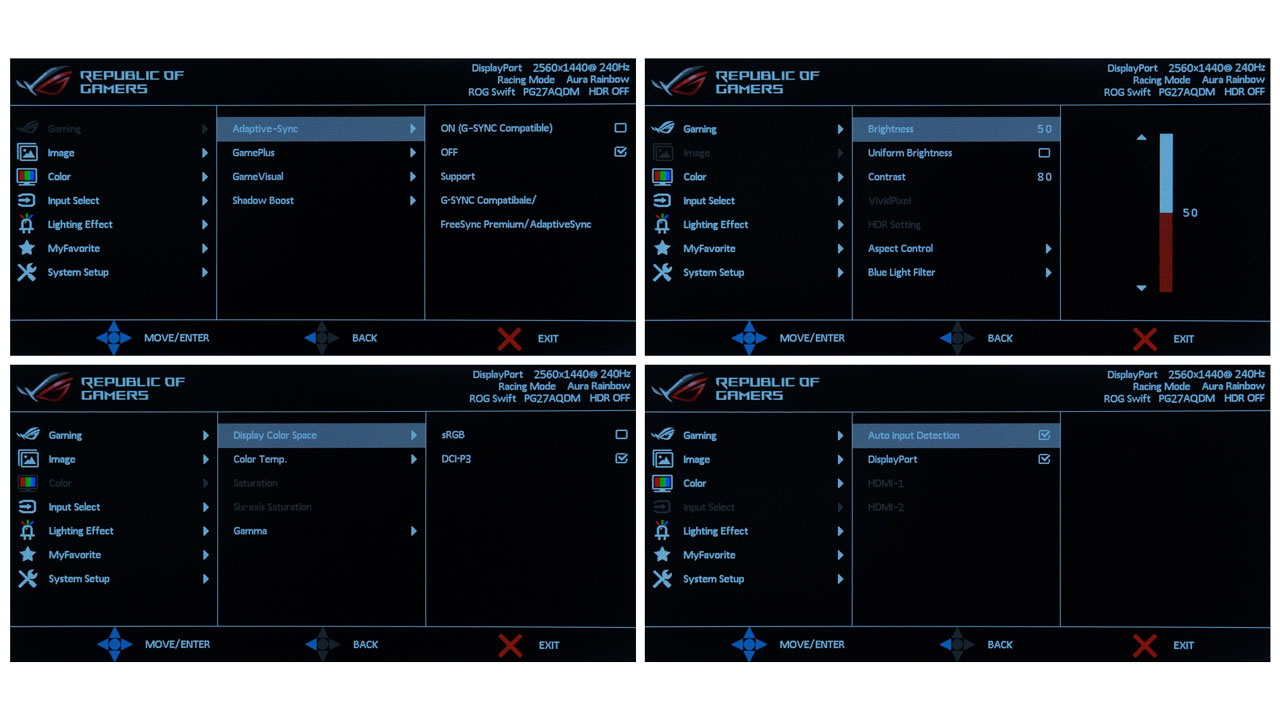
I don’t find anything out of place here really but I would love it if ASUS could provide a separate menu for the Screen Protection sub menu. It is kinda buried at the System Setup so I assume you have to set it as a favorite (have not tested if it works) or just open it up using the desktop application every now and then.
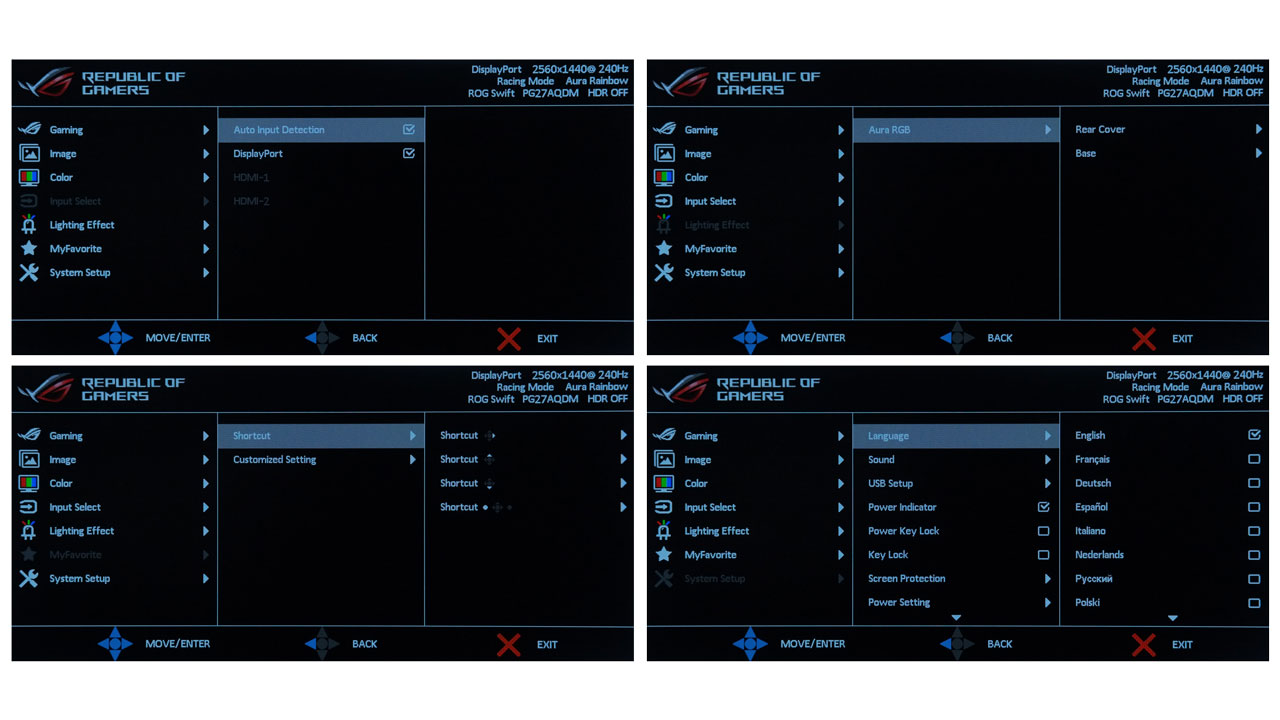
Nothing else to complain here to be honest.
Ergonomics
The ASUS ROG Swift OLED PG27AQDM is a 27 inch (26.5 inch) display with a resolution of 2560 x 1440. It has a relatively good PPI level of 110.84. With its default stand, the maximum depth you have is about 37 cm for a 60 cm desk.

Ergonomic options are actually pretty great: It could tilt, swivel, lift up or down (±52.5 mm/105 mm) and even pivot. This is why I wish it has the ROG Desk Mount bundled so you don’t have to purchase an additional VESA mount if you need more desk space. The default stand with its RGB lighting, top-mounted female 1/4 threaded insert and excellent build quality are just hard to pass.
Test Setup and Methodology
Our test setup relies on the measurements taken from the DataColor Spyder5 Elite colorimeter and the OSRTT PRO response time tool. It is important to note that we are testing the review sample after burn-in, with at least 24-hours of uptime. This is done so to negate the FOTB (fresh out the box) state of the DUT (device under test), yielding better benchmarking consistency.
| Test Setup | |
|---|---|
| Colorimeter | DataColor Spyder5 Elite |
| Response Time Tool | OSRTT Pro |
| Resolution | Native |
| Refresh Rate | Native |
| Color Depth | Native |
| Luminance | 120 cd/m² |
| White Point | 6500 K |
| Gamma | 2.2 |
Due to a number of factors including the test equipment and its limitations, the measurements obtained here are not meant to be compared from various results you may find online.
OSD Presets
Luminance, contrast and white point are measured in their respected units (SI/non-SI). The test aims to evaluate the OSD presets.
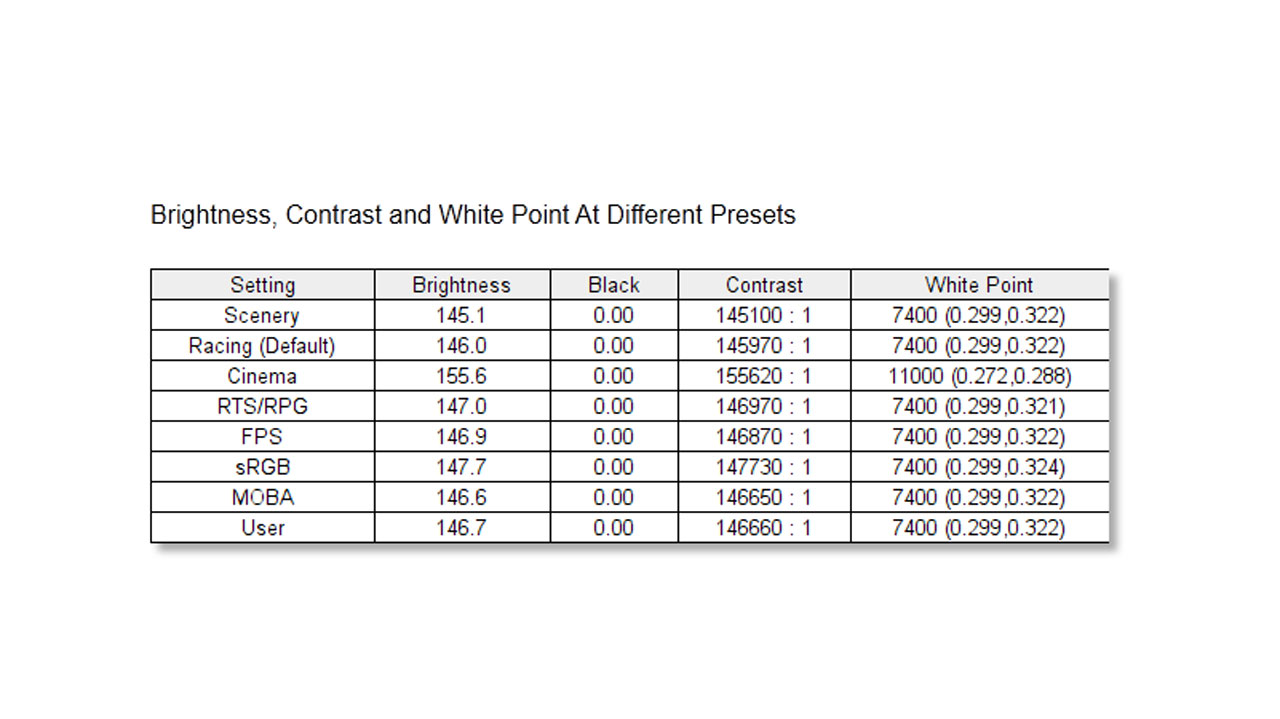
Closest to target for calibration is actually the sRGB mode which is in-line with ASUS’ claimed calibrated report. Contrary to the DataColor measured White Point, 7400 K is actually around 6641 K when measured with the DisplayCAL. That said, the only mode I would steer away from is the Cinema when trying to find a suitable candidate for calibration. For reference, we chose the User Mode for calibration in conjunction with DisplayCAL since we could actually adjust the RGB levels there with precision. OSD settings are as follows:
- Preset = GameVisual -> User Mode
- Brightness = 63
- Contrast = 80 (Default)
- Color Temperature = User (R94, G76, B64)
- Gamma = 2.2
- Color Space = DCI-P3
As usual, send me an email if you need the ICC or ICM profile for this particular monitor.
Gamut
Coverage level is measured in percentage (%). The test aims to evaluate the gamut and its compliance with industry standard color spaces.
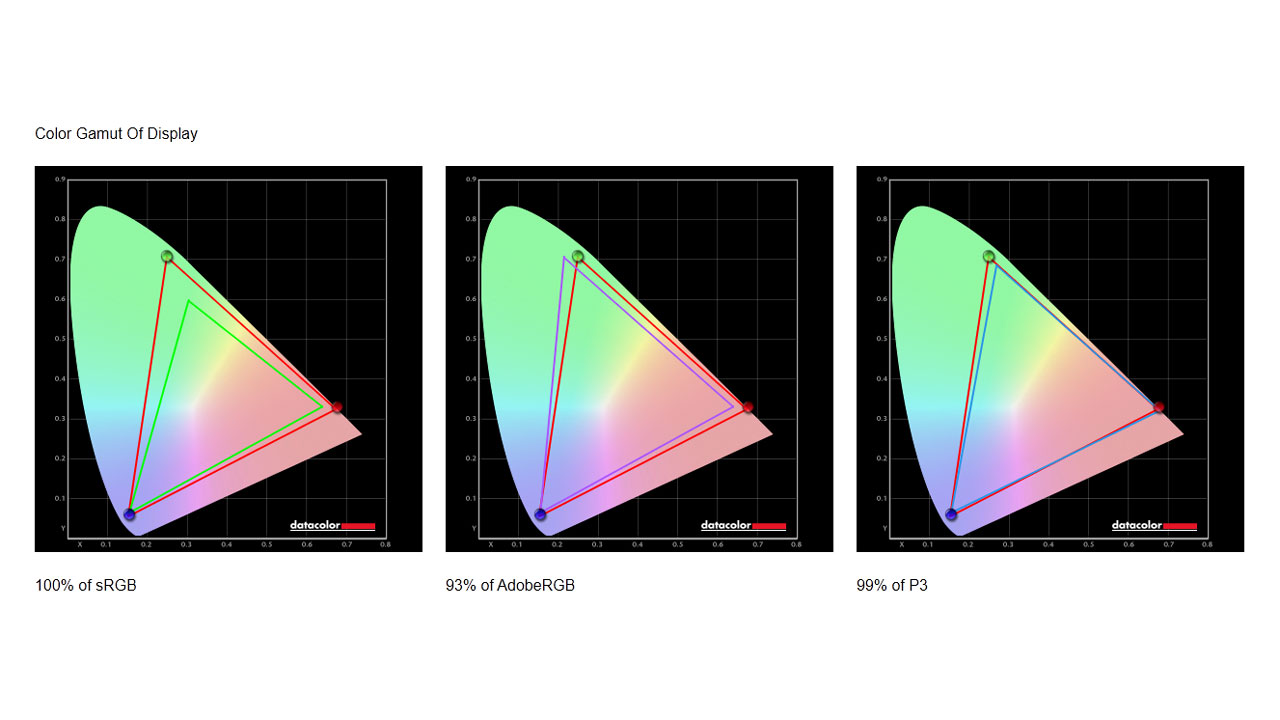
We have 100% sRGB, 93% AdobeRGB and 99% DCI-P3 coverage. Color Gamut coverage is excellent as far as our measurements are concerned.
Tone Response
Tonal response curve is measured in gamma (γ). The test aims to evaluate the tone response and its compliance with industry standard gamma levels.
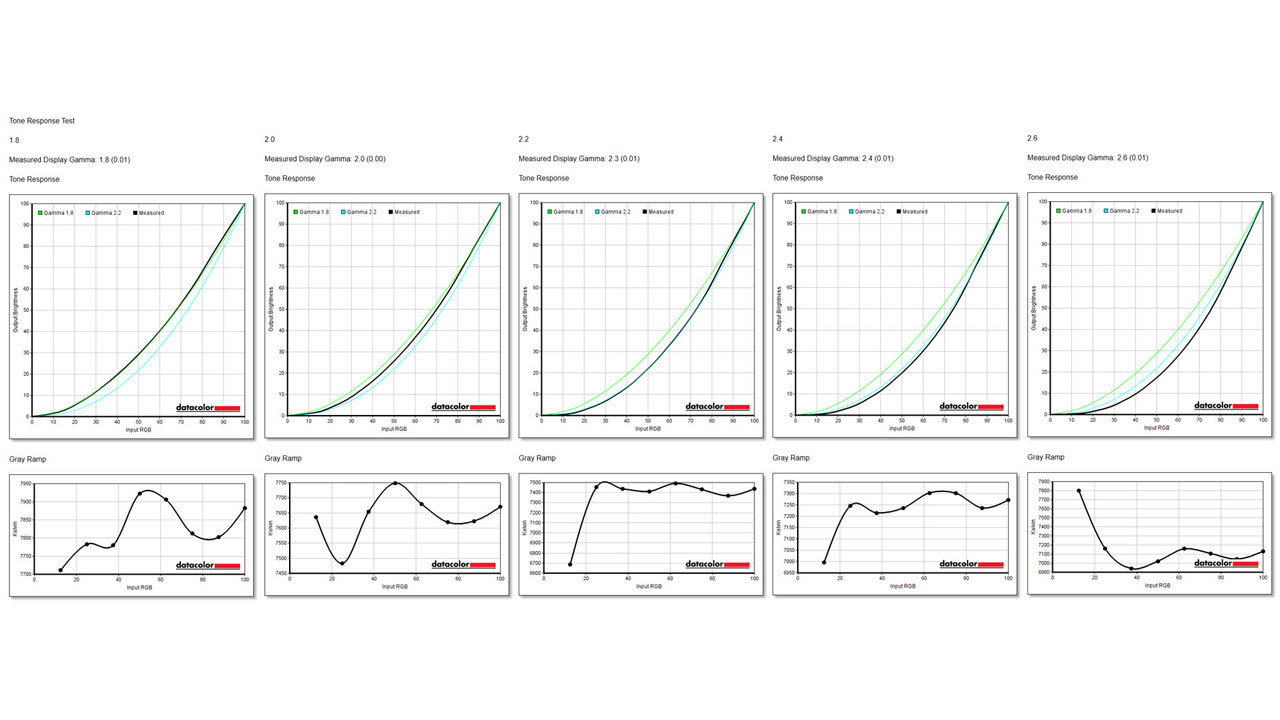
The PG27AQDM is exceptional when representing the industry standard gamma levels – sans 2.2 with just a tad darker tone response.
Brightness and Contrast
Luminance is measured in candela per square meter (cd/m²) while contrast is measured in ratio (:). The test aims to evaluate the brightness and contrast.
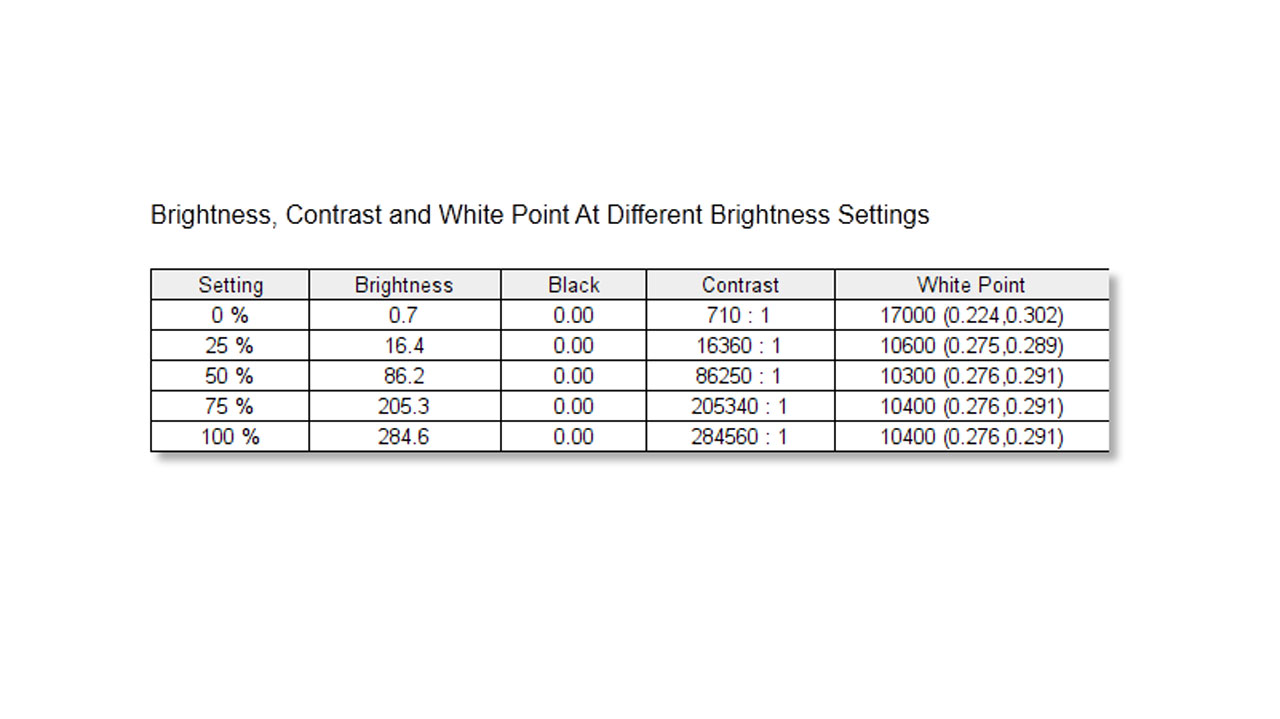
Peak SDR brightness is measured at 284.6 cd/m² which is decent but it is around ~166 cd/m² lower compared to the manufacturer specified peak. I cannot replicate the claimed 450 cd/m² with its current firmware version (1.3) but it is doable to breach 400 cd/m² with a higher or rather cooler White Point along with the Uniform Brightness and Power Savings mode turned off. Now as for contrast, the Spyder5 ELITE struggles to accurately capture it, showing absolute zero on black levels which is basically infinity:1. Personally, I could say is it has one of, if not the best black levels I have seen on a gaming monitor.
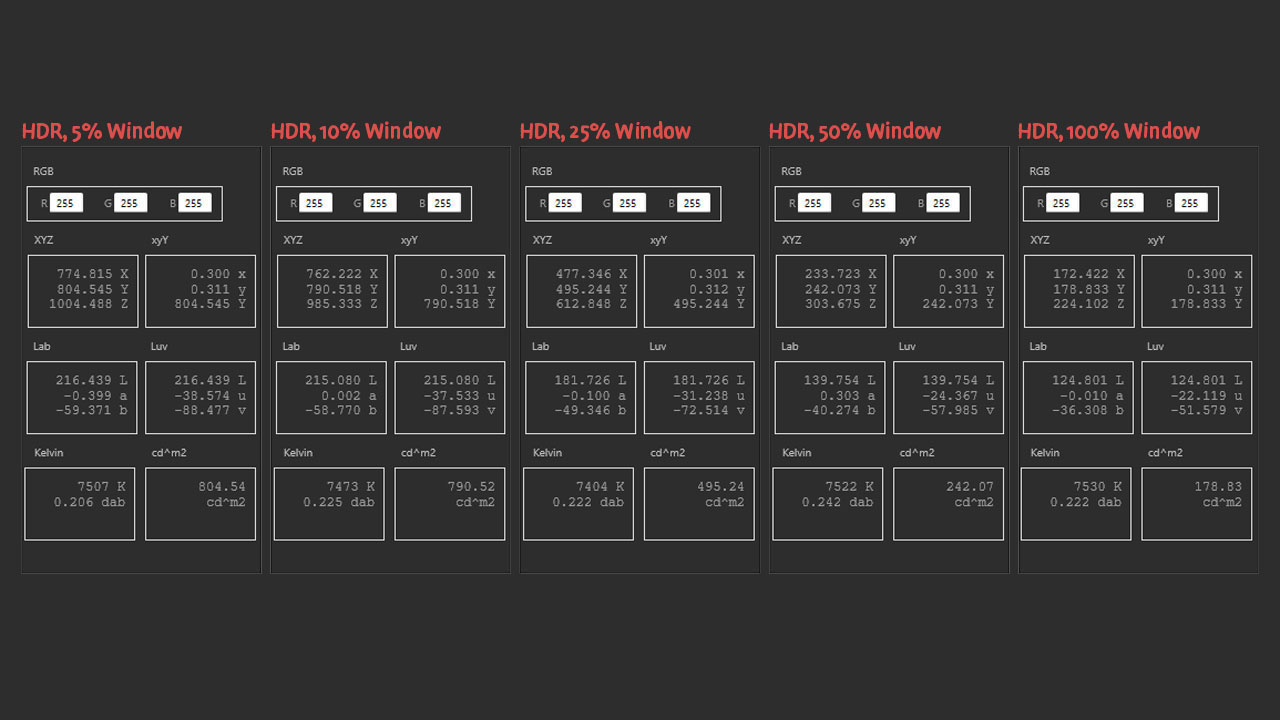
HDR luminance is actually great even though we cannot reach the advertised peak brightness of 1000 cd/m². That said, we have measured a respectable 804 cd/m² at 5% Window and 790.52 cd/m² at 10% Window. It goes on a steep slope with larger Window sizes ultimately going as low as 178.83 cd/m² at 100% Window.
Screen Uniformity
Color difference is measured in Delta-E (∆E) while luminance difference is measured in percentage (%). The test aims to evaluate the screen uniformity.
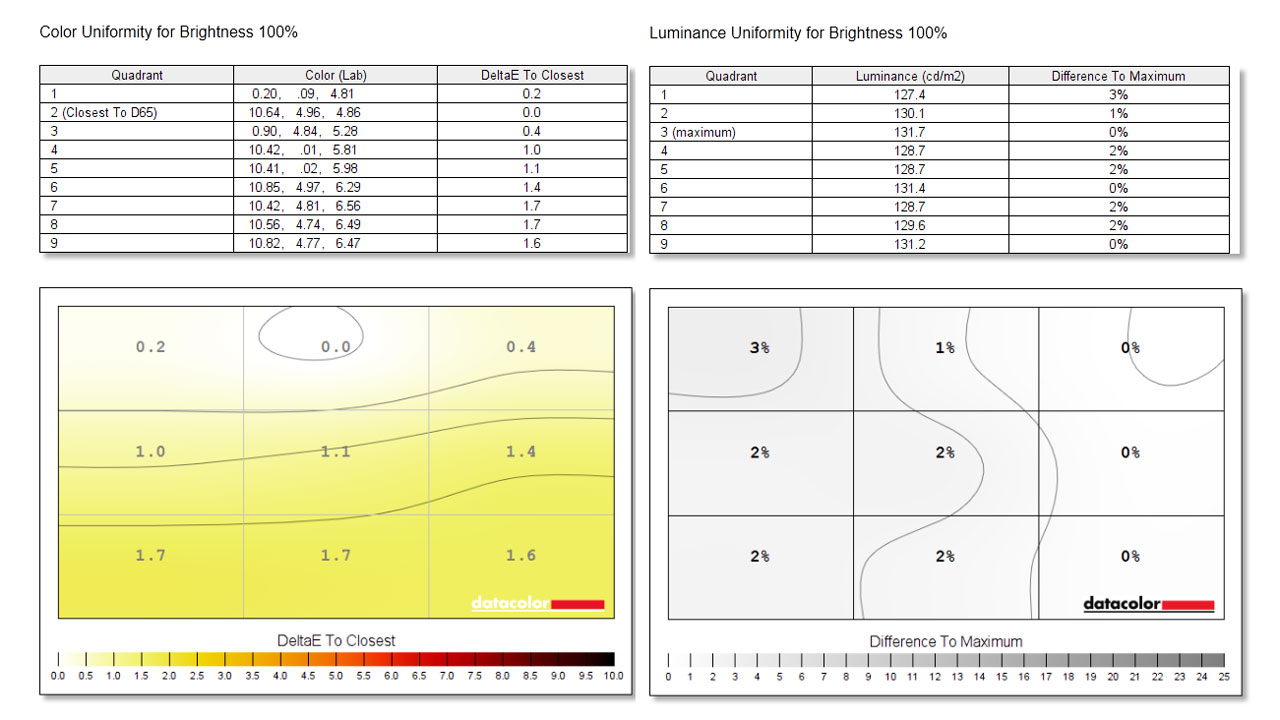
Color and luminance uniformity are pretty great with no hot spots or any areas that you needed to be concerned. It is worthy to note that we have enabled Uniform Brightness at the OSD when we did this test. Actually make sure to enable that option since it is disabled by default.
Color Accuracy
Color difference is measured in Delta-E (∆E). The test aims to evaluate the color accuracy.
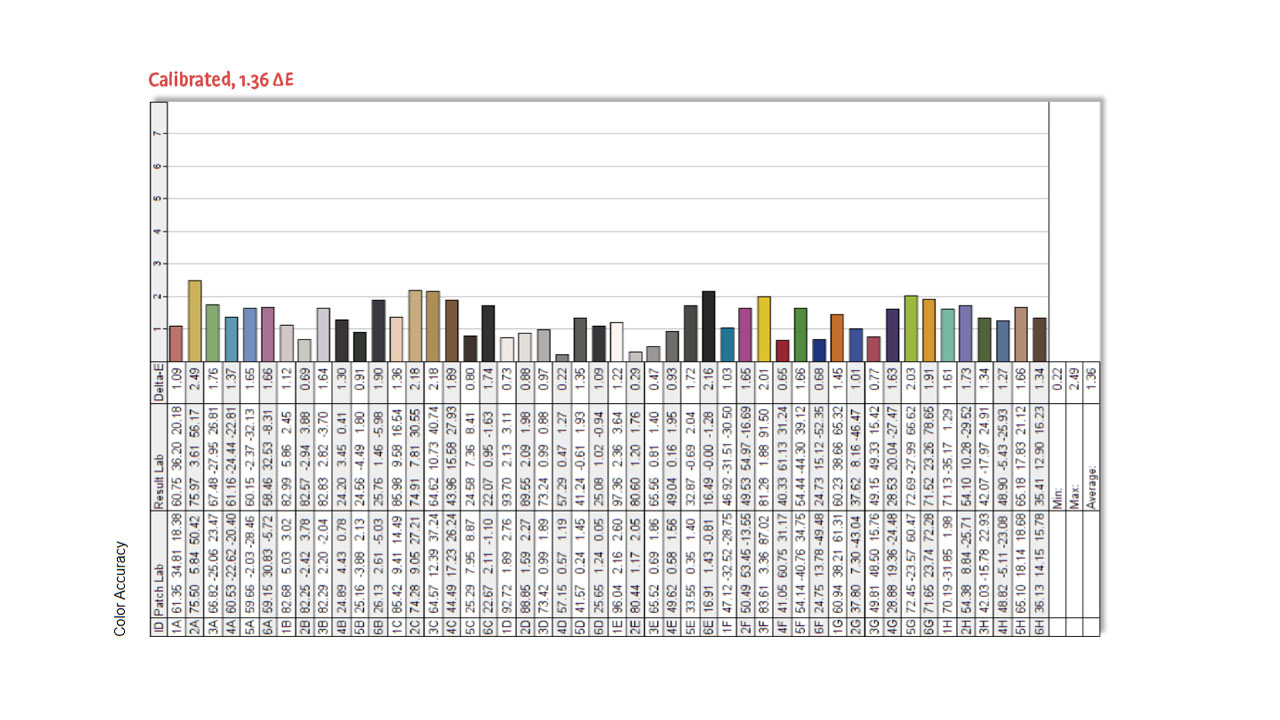
Color accuracy is thrown out of the window if we only consider the default settings. That said, I would highly suggest using sRGB mode to make use of ASUS’ factory calibration. Now when calibrated, we have an excellent 0.89 ∆E for the sRGB color space while we have a respectable 1.36 ∆E for DCI-P3.
Response Time
Perceived response time, RGB overshoot and visual response rating are measured in their respective units (SI/non-SI). The test aims to evaluate the response time with OSRTT Pro.
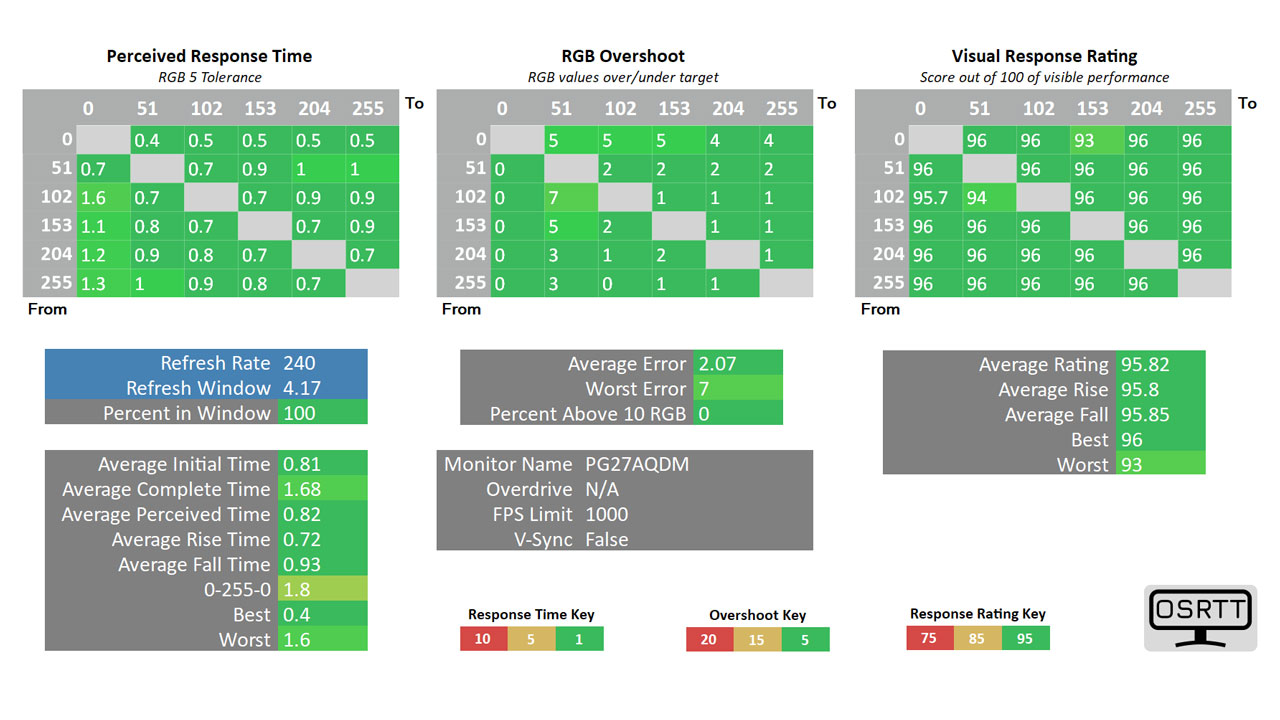
ASUS really nailed it with the perceived response time clocking in at 0.82 ms on average. RGB overshoot is also very minimal, featuring an average error of 2.07. That said, the PG27AQDM came really close to perfection with an average visual response rating of 95.82. These results also checks out visually using a pursuit camera setup.
Input Lag
Input latency is measured in milliseconds (ms). The test aims to evaluate the input lag with OSRTT Pro.
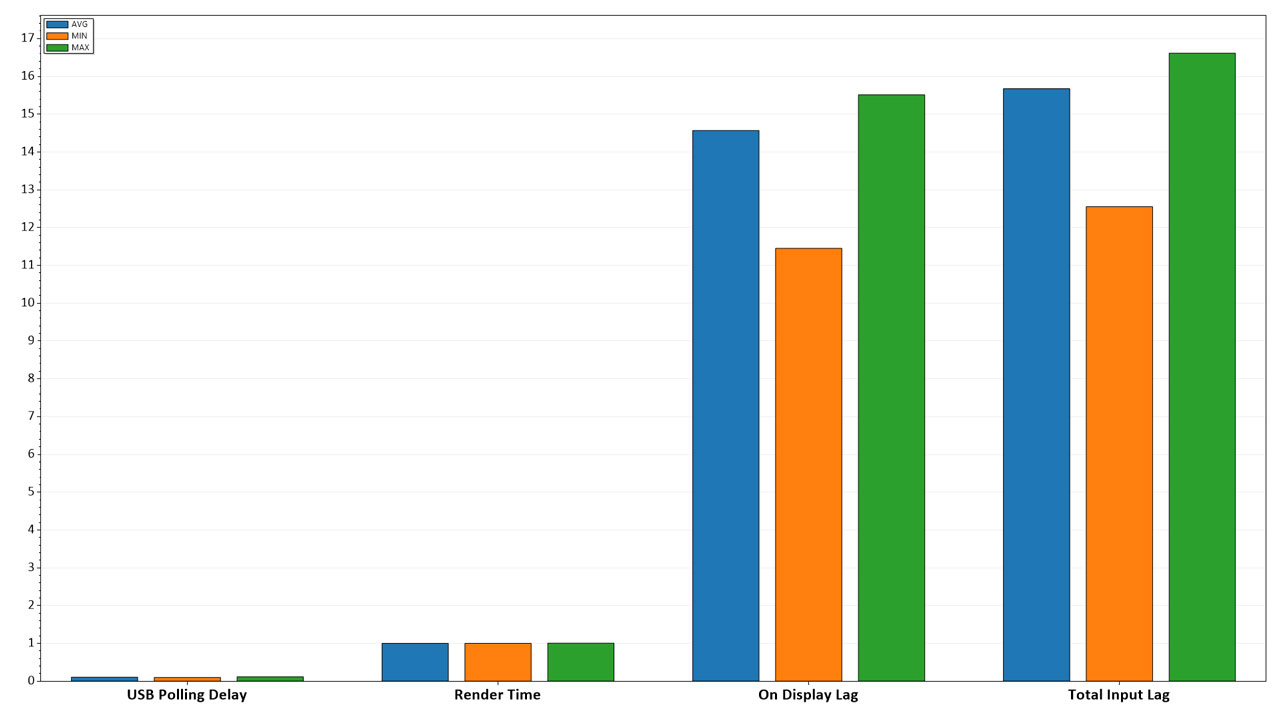
Input lag is most likely the only negative thing you’ll encounter about the PG27AQDM’s gaming performance. We’ve measured an average on display lag of 14.6 ms adding up to an average total input lag of 15.7 ms with the USB polling and render time included. Pretty middling result we got here as far as input lag is concerned. Time Sleuth also confirms this one so my initial findings prior to the OSRTT Pro is right on the money.
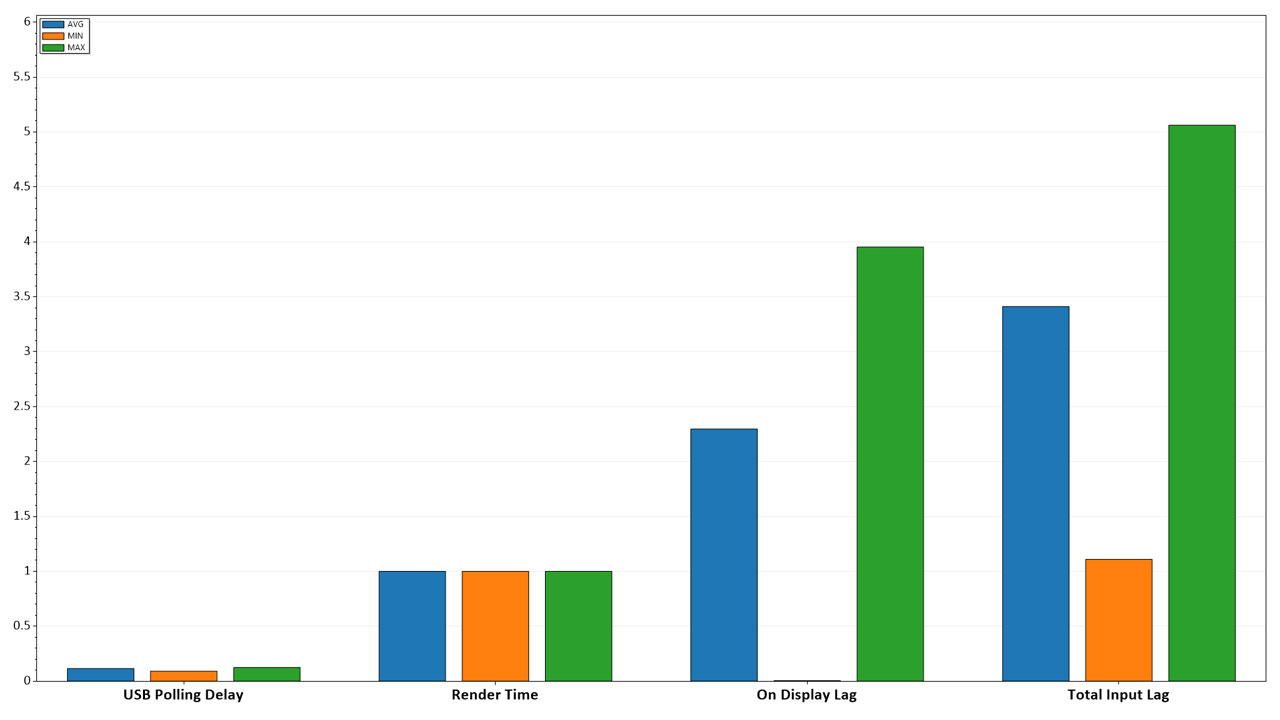
Update: Finland technology website io-tech.fi sent us their findings relating to the high input lag result of the PG27AQDM. According to them, there is a persistent VRR bug within the OSD and I could confirm that this is true. This bug basically enables Adaptive Sync even when it is turned off. Using the current firmware version 1.4, I also noticed that going from HDR to SDR also enables VRR by default without a way to disable it unless you reset the device to its factory state. A new firmware should alleviate this issue.
Power Consumption
Power is measured in Watts (W). The test aims to check the power consumption at different brightness levels.
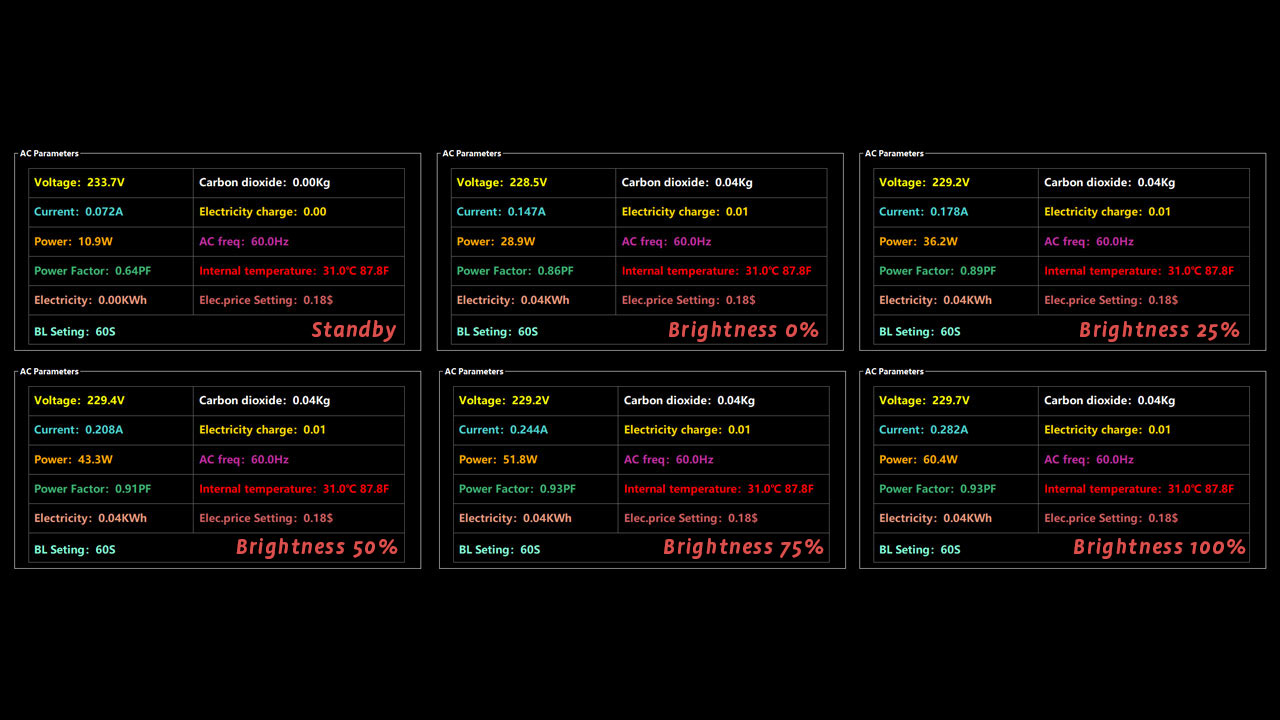
Power consumption is above typical for its size. Granted, I have not tested OLED panels in the past so this is a good reference to start with. Note that this has been tested at SDR so it could be higher when HDR mode is activated.
Features
The PG27AQDM features a WOLED panel from LG with a WRGB sub pixel layout. This allowed the monitor to reach excellent luminance for HDR content consumption without sacrificing image quality. The crux here though is the nature of WRGB sub pixel layout that has this fuzzy effect on certain texts and background combinations. This is fixable (Google: MacType) though and I dare say Microsoft should have an optimized option for OLED panels from the get go.
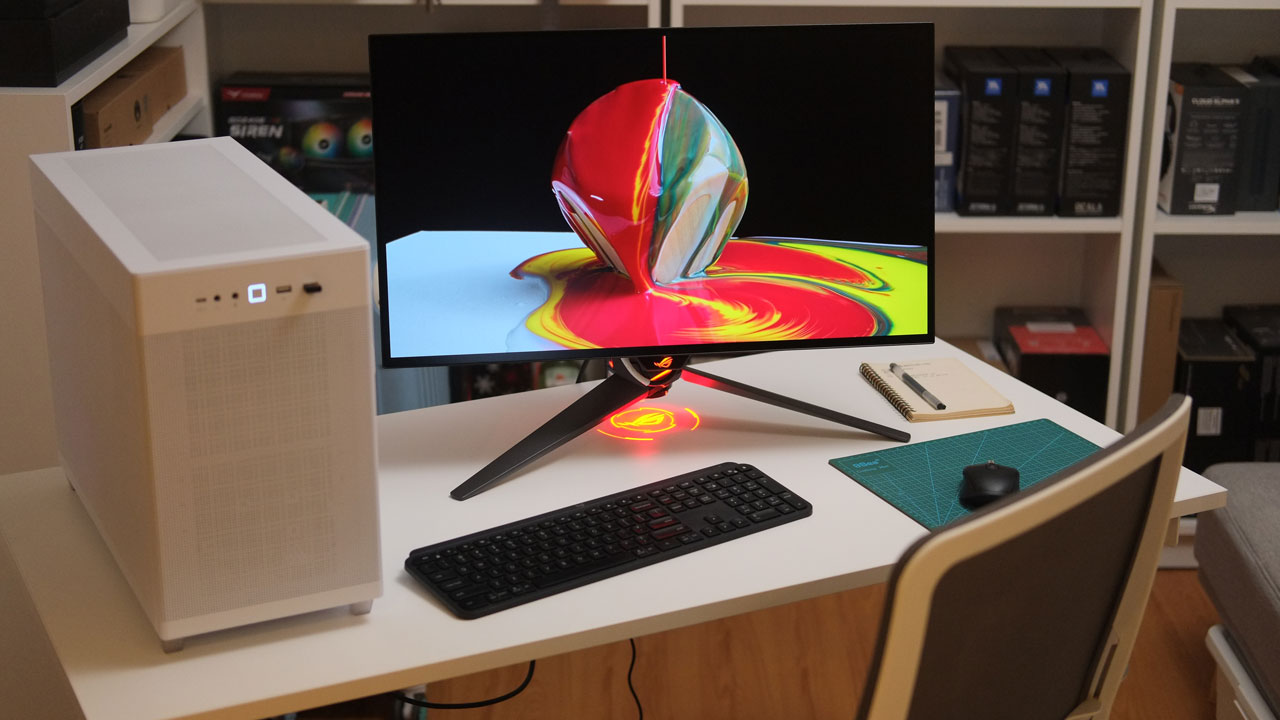
Now the ROG DisplayWidget Center is what you have to use to connect the monitor’s firmware into your operating system so you could use its OSD functions without actually the need to fiddle with the buttons and joysticks. I find this particularly useful to setup the highly recommended options for OLED screen care.
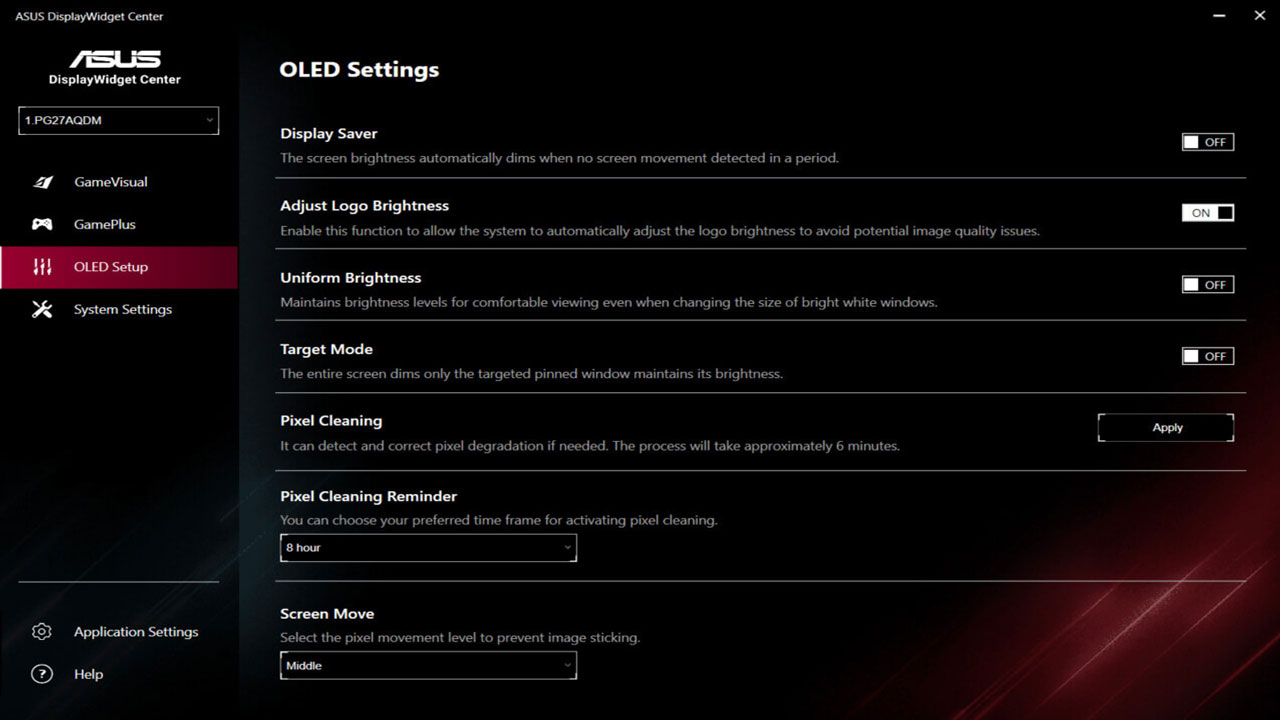
As an ROG panel, the PG27AQDM is no slouch when it comes to bragging rights factor. This is an extremely pleasing monitor even when it is turned off.
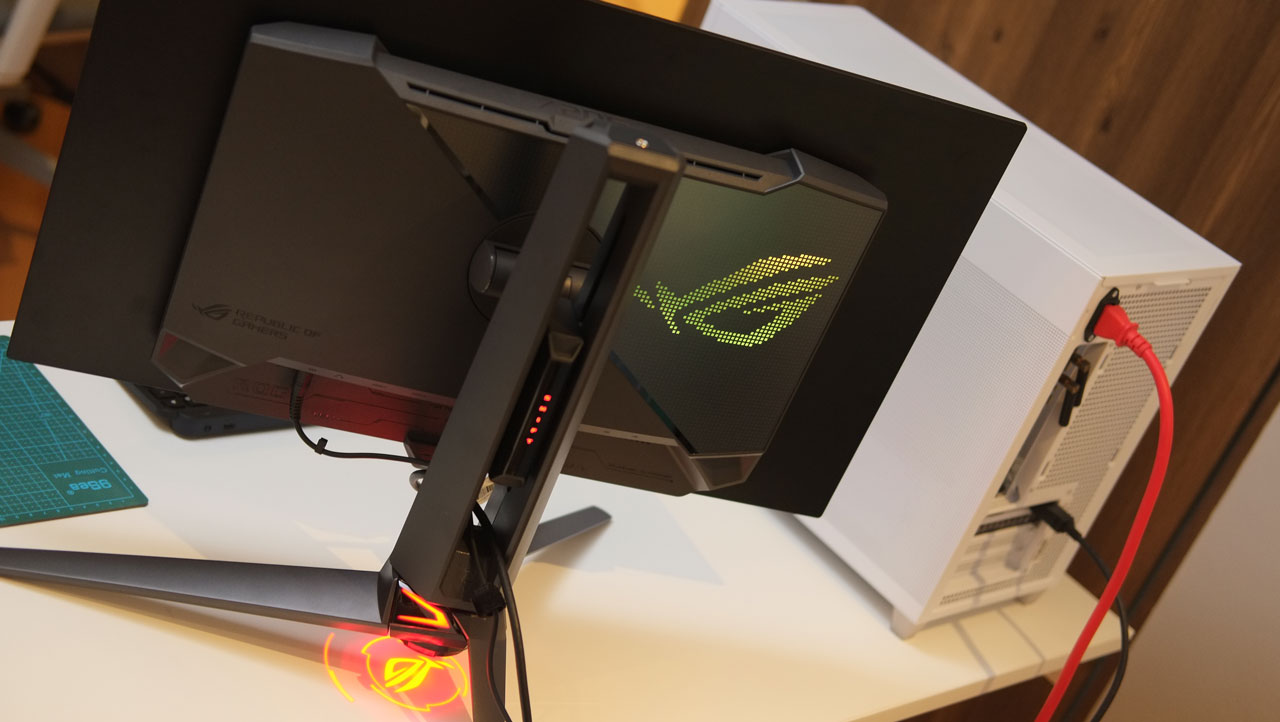
Final Thoughts
Priced locally at ₱ 61,990 PHP, the ASUS ROG Swift OLED PG27AQDM is one expensive gaming monitor. It has the rights to float around this price range due to its features, specifications and its class leading performance in tow. That includes the excellent brightness and contrast ratio, color reproduction, perceived response time and an HDR mode that does not suck.
It is hard to fault this gaming monitor but like many things, it is not perfect. For an instance, there is a bug with its VRR mode (fixable) and like many OLED panels, it needs some TLC. Other than those and Microsoft’s lack of love for WRGB sub-pixel layouts or OLEDs in general, I have nothing else major to complain.
The ASUS ROG Swift OLED PG27AQDM is actually one of the best gaming monitors you could buy right now and that is the reason why it commands such an MSRP in the first place. It is ASUS ROG’s flagship after all.

ASUS ROG Swift OLED PG27AQDM
Summary
At $999 USD, the ASUS ROG Swift OLED PG27AQDM sure looks expensive for a WQHD 27 inch OLED display with a 240 Hz refresh rate. I say it is a fair price to pay for a flagship product with (mostly) class leading OLED enhanced features and performance.


